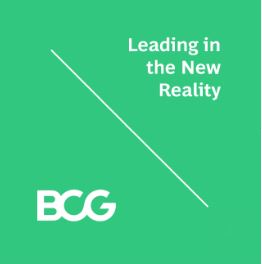Weekly Brief: Can This Economic Recovery Last?
This week, I’m pleased to share with you some highlights from “Why the Global Economy Is Recovering Faster Than Expected,” a terrific recent Harvard Business Review article by my colleagues at the BCG Henderson Institute.
Despite the lack of control we have over the virus, we’ve seen a much stronger-than-expected economic recovery. What has driven the gap between expectations and reality, and can the recovery last?
When the pandemic—and ensuing lockdowns—began in Q1, we witnessed unimaginable economic contractions. Since then, however, sectors in many economies have bounced back to, or even grown beyond, their pre-crisis levels. The authors of this article get to the bottom of this phenomenon.
The effects of COVID-19 were an extreme shock to the economy. But unlike in recent recessions (2001 and 2008–2009), we’re not faced with the kind of overhang of excess investments that would present a persistent headwind to recovery.
Further, policymakers, particularly in the US, have acted much more swiftly and decisively than in 2008 to prevent systemic contagion within the financial system, as well as undesirable corporate and household bankruptcies, thus avoiding a downward spiral. That strong policy response has contained the structural damage, with capex holding up remarkably well, ensuring that the foundation for growth remains healthy.
Can the recovery continue to beat expectations? We need strong policy actions to continue, but we also need additional sources of growth. If we look at US consumption, for example, three buckets emerge:
- The first group of industries, representing 46% of consumption, never felt the impact of the pandemic. This includes food, financial services, housing, and utilities.
- The second bucket, comprising about 15% of consumption, took a bad hit from lockdowns. But when social distancing replaced lockdowns, these industries recovered fully and, in some cases, exceeded pre-crisis levels. This group is made up of autos and other durables, and even clothing.
- Representing about 38% of US consumption, the third bucket will fully recover only once we have widespread vaccines. This group includes recreational services, food service, accommodation, and transportation.
Despite the prospects for a continued healthy recovery, the risks are clear. We need a safe and effective vaccine to be widely distributed as soon as possible. We hope new lockdowns can be more targeted this time, allowing growth to stay positive. And we need the resurgence in the virus to be met with renewed stimulus, which has not happened in the US so far. The battle is far from over, but a sustained economic recovery is not out of our grasp.
In parallel to this HBR article, my colleague Marin Gjaja and I recently published in Fortune our latest thinking on how to combat the pandemic. Please see below for more related content. Looking forward to connecting again next week.
 |
Rich Lesser
Chief Executive Officer
|
|









